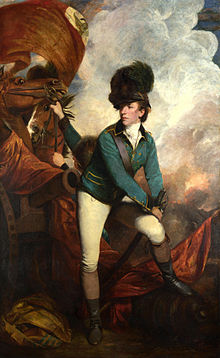Mary Robinson (1757-1800).
British actress, poet, novelist & royal mistress.
From the editor of Memoirs of Mary Robinson: "Perdita".
"The author of these Memoirs, Mary Robinson, was one of the most prominent and eminently beautiful women of her day. From the description she furnishes of her personal appearance, we gather that her complexion was dark, her eyes large,her features expressive of melancholy; and this verbal sketch corresponds with her portrait, which presents a face at once grave, refined, and charming. Her beauty, indeed, was such as to attract, amongst others, the attentions of Lords Lyttelton and Northington, Fighting Fitzgerald, Captain Ayscough, and finally the Prince of Wales; whilst her talents and conversation secured her the friendship and interest of David Garrick, Richard Brinsley Sheridan, Charles James Fox, Joshua Reynolds, Arthur Murphy, the dramatist, and various other men of distinguished talent." (Memoirs of Mary Robinson: "Perdita": vii)
Physical appearance & personal qualities.
"The author of these Memoirs, Mary Robinson, was one of the most prominent and eminently beautiful women of her day. From the description she furnishes of her personal appearance we gather that her complexion was dark, her eyes large, her features expressive of melancholy; and this verbal sketch corresponds with her portrait which presents a face at once grave, refined, and charming. . . . " (A Celebration of Women Writers)
Perdita's string of relationships.
". . . During this period, she was reputed to have had relationships with a string of other men, including Charles James Fox, Lord Malden, Richard Brinsley Sheridan, and others, exacerbating her reputation as a courtesan. In October, 1781, she then went to France, where she was pursued by Philippe, Duke of Chartres. She may also have had a relationship with Armand Louis de Gontaut, Duc de Lauzun, and she certainly admired and was admired by Marie-Antoinette. . . She was reputed as having other lovers at other times, including Sir John Lade. . ., Lord Lyttleton, the Duke of Dorset, the Earl of Cholmondeley. . ., and the French Duc de Lauzun. . . ." (Walsingham: or, the Pupil of Nature:11)
Why them as lovers?.
". . . The men who attracted Mary differed, but had one thing in common. They were all preeminent in their fields. The Prince was the leader of society, Tarleton its hero, Fox the outstanding orator and politician. If to them are added Sheridan, who may have been a lover, and men such as Godwin the philosopher and Coleridge the poet who were not lovers but whose friendship she later cultivated, then it can be seen that in male admirers Mary Robinson sought out the best. . . . " (The Prince's Mistress, Perdita: A Life of Mary Robinson)
"Mary Robinson (1759-1800) was a remarkable woman. In today's newspapers she would feature in the Arts supplement as well as in the scandal pages. Not only had she been an accomplished actress but from her mid-twenties she was a poet and novelist, admired and respected by the leading literary figures of the day. But the name by which she was always known was Perdita, mistress of the Prince of Wales." (Mary Robinson -- the Prince Regent's First Mistress)
Personal & family background.
"Mary Darby was born November 27th, 1758. She was the third of five children born to John Darby and his wife Hester Seys. When Mary was seven, Captain Darby went to Labrador to try to establish a whaling station leaving his wife and family in Bristol, and taking his mistress with him. Financial support from Captain Darby was infrequent, reflecting both the failure of his business speculations and a lack of interest in his wife and family that eventually culminated in a formal separation." (A Celebration ow Women Writers)
Spouse & Children: She married, in 1774, Thomas Robinson, an articled clerk.
Perdita's string of relationships.
". . . During this period, she was reputed to have had relationships with a string of other men, including Charles James Fox, Lord Malden, Richard Brinsley Sheridan, and others, exacerbating her reputation as a courtesan. In October, 1781, she then went to France, where she was pursued by Philippe, Duke of Chartres. She may also have had a relationship with Armand Louis de Gontaut, Duc de Lauzun, and she certainly admired and was admired by Marie-Antoinette. . . She was reputed as having other lovers at other times, including Sir John Lade. . ., Lord Lyttleton, the Duke of Dorset, the Earl of Cholmondeley. . ., and the French Duc de Lauzun. . . ." (Walsingham: or, the Pupil of Nature:11)
Why them as lovers?.
". . . The men who attracted Mary differed, but had one thing in common. They were all preeminent in their fields. The Prince was the leader of society, Tarleton its hero, Fox the outstanding orator and politician. If to them are added Sheridan, who may have been a lover, and men such as Godwin the philosopher and Coleridge the poet who were not lovers but whose friendship she later cultivated, then it can be seen that in male admirers Mary Robinson sought out the best. . . . " (The Prince's Mistress, Perdita: A Life of Mary Robinson)
"Mary Robinson (1759-1800) was a remarkable woman. In today's newspapers she would feature in the Arts supplement as well as in the scandal pages. Not only had she been an accomplished actress but from her mid-twenties she was a poet and novelist, admired and respected by the leading literary figures of the day. But the name by which she was always known was Perdita, mistress of the Prince of Wales." (Mary Robinson -- the Prince Regent's First Mistress)
Personal & family background.
"Mary Darby was born November 27th, 1758. She was the third of five children born to John Darby and his wife Hester Seys. When Mary was seven, Captain Darby went to Labrador to try to establish a whaling station leaving his wife and family in Bristol, and taking his mistress with him. Financial support from Captain Darby was infrequent, reflecting both the failure of his business speculations and a lack of interest in his wife and family that eventually culminated in a formal separation." (A Celebration ow Women Writers)
Spouse & Children: She married, in 1774, Thomas Robinson, an articled clerk.
Achievements & Honours: ". . . She completed seven novels (the first of them a runaway bestseller), two political tracts, several essays, twp plays, and literally hundred of poems." (Byrne: xiii)
 |
Mary Robinson as an Actress.
" . . . She was taken on by the manager of the Theatre Royal, Drury Lane, the dramatist Richard Brinsley Sheridan, and she built up a reputation in a number of Shakespearean roles. In was when Mary appeared as Perdita in the Winter's Tale for a Royal Command Performance that the young Prince first saw her. He was 17 and she was 21. It was he who made the first move. Once the Prince caught sight of her, he was smitten. The next day she received a note from him signed 'Florizel'. . . ." (Mary Robinson -- the Prince Regent's First Mistress)
 |
" . . . Now we find her at the Pantheon, with its coloured lamps and brilliant music, moving amidst a fashionable crowd, where large hoops, and high feathers abounded, she herself dressed in a habit of pale pink satin trimmed with sable, attracting the attention of men of fashion. . . ." (A Celebration of Women Writers)
Her lovers were:
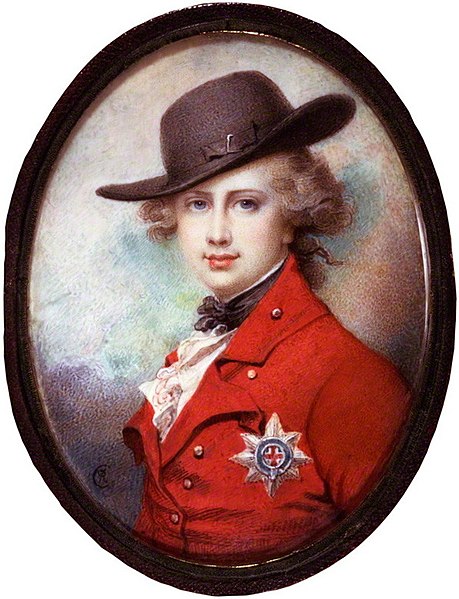 |
| George IV of Great Britain |
George IV of Great Britain (1762-1830)
Lover in 1779-1781.
Perdita first encounter & life with the Prince of Wales.
"The Prince at the age of 17 was not the fat, lecherous, dissipated hedonist of later years, depicted in so many satirical cartoons. When Mary first met him he was handsome, cultivated, and good-tempered. He was known as a man of enormous charm, intelligence and taste. Mary was not exaggerating when she described him as 'the most admired and most accomplished Prince in Europe.' He fenced and boxed, but also plated the cello, drew and had a deep appreciation of painting. One of the members of the royal household, Mrs. Papendiek, wrote in her journal, 'he was not so handsome as his brother, but his countenance was of a sweetness and intelligence quite irresistible. He had an elegant person, engaging and distinguished manners, added to an affectionate disposition and the cheerfulness of youth.'. . . ." (Perdita: The Literary, Theatrical, Scandalous Life of Mary Robinson: 96)
"The fact of her becoming an actress brought about the turning-point in her life; it being whilst she plated Perdita in the Winter's Tale before royalty that she attracted the Prince of Wales, afterwards George IV, who was then in his eighteenth year. The incidents which followed are so briefly treated in the Memoirs that explanations are necessary to those who would follow the story of her life.
 |
| Kew Palace @Wikipedia |
"The performance of the play in which the Prince saw her, probably for the first time, took place on the 3rd of December, 1779. It was not until some months later, during which the Prince and Perdita corresponded, that she consented to meet him at Kew, where his education was being continued and strict guard kept upon his conduct. During 1780 he urged his father to give him a commission in the army, but, dreading the liberty which would result from such a step, the King refused his request. It was, however, considered advisable to provide the Prince with a small separate establishment in a wing of Buckingham House; this arrangement taking place on the 1st of January, 1781.
"Being now his own master, the Prince became a man about town, attended routs, masquerades, horse races, identified himself with politicians detested by the King, set up an establishment for Mrs. Robinson, gambled, drank, and in a single year spent ten thousand pounds of clothes. He now openly appeared in the company of Perdita at places of public resort and amusement; she, magnificently dressed, driving a splendid equipage which had cost him nine hundred guineas, and surrounded by his friends. We read that---'To-day she was a paysanne with her straw hat tied at the back of her head. Yesterday she perhaps had been the dressed belle of Hyde Park, trimmed, powdered, patched and painted to the utmost power of rouge and white lead; to-morrow she would be the cravated Amazon of the riding house; but, be she what she might, the hats of the fashionable promenaders swept the ground as she passed.'"
This life lasted about two years, when just as the Prince, on his coming of age, was about to take possession of Carlton House, to receive 30,000 pounds from the nation towards paying his debts, and an annuity of 63,000 pounds, he absented himself from Perdita, leaving her in ignorance of the cause of his change, which was none other than an interest in Mrs. Grace Dalrymple Elliott."(Memoirs of Mary Robinson: "Perdita": viii)
Discovering Perdita in a play at Drury Lane Theater.
"Mary Robinson was lady of the day to the then 18-year-old Prince of Wales in 1780. A lovely, witty actress with dark hair the Prince first beheld as Perdita in 'The Winter's Tale' at Drury Lane Theater Dec. 3, 1779. He lavished gifts on her including a splendid equipage that cost him 900 guineas. In the heat of his passion the Prince wrote her a bond for 20,000 pounds. At the end of the affair Fox negotiated the return of the bond in exchange for an annuity of 500 pounds. Linked to Lord Lyttelton, Lord Nottington, Fighting Fitzgerald, Captain Ayscough, before the Prince of Wales. She became a published poet. Mary was next involved with Colonel Banastre Tarleton. This relationship lasted sixteen years." (Georgian Index)
First encounter.
". . . Then, on December 3, 1779, she played the role of Perdita in Garrick's adapted Winter's Tale before the royal family. Robinson's enemies claim she made eyes at the Prince of Wales throughout the performance; she claimed to have been overwhelmed by confusion at his attention. A few days later the prince sent her a note signed 'Florizel' and these two celebrity actors embarked on their own performance of romance. Robinson and her critics disagree both as to the start of the affair and its duration. Robinson's Memoir, for instance, suggests (for obvious reasons) that the romance became fully sexual only after her separation from her husband in June 1780. The lovers seem to have separated in December 1780, but Robinson's Memoir suggests that the prince blew hot and cold over the next several months. Certainly the finances of their separation were only agreed upon in September 1781." (Women, Nationalism, and the Romantic Stage:108)
"The high point of the celebrity actress-cum-courtesan, constant fare in the public prints and the artist's studio, arrived in 1780 with the affair between Mrs. Mary Robinson and the Prince of Wales. Robinson, known generally as 'Perdita' for the part she made famous at Drury Lane, was twenty-two and living in an unhappy marriage with a faithless and feckless husband who seems to have been her pimp to keep the household finances barely afloat -- he was in the Fleet Prison for debt, Mary living with him, some time before she took the stage in 1776. When the affair began the Prince was just seventeen and a lovely and impressionable youth. Wit, intelligence and experience were all on Mrs. Robinson's side. Despite that, the glamour of a royal connection was so seductive that finally she was persuaded to relinquish a profitable stage career. The Prince's passion proved as unreliable as his purse with compensation that was eventually settled at 500 pounds a year for life irregularly paid. For that he bedded, and was frequently seen in the company of one of the most beautiful women of the age, as portraits by Reynolds, Gainsborough, George Romney and especially John Hoppner attest. The affair with the Prince was over in months. He transferred his attention to 'The Armistead', equipped for the role by brothel and stage, her list of lovers glittering. . . ." (A Great and Monstrous Thing: 379)
"George, prince of Wales, was also financially irresponsible and repeatedly incurred debts that he could not meet, leading to demands for assistance that worried his father. In 1781, George III had to pay 5,000 pounds to buy back the love letters that the prince had written his mistress, Mary Robinson, a prominent actress whom he had seen playing Perdita. She was also given a life annuity of 600 pounds and 200 pounds for her daughter (who predeceased Prince George), in return for surrendering the prince's promise of 20,000 pounds when she came of age...." (George III: America's Last King)
Perdita's tangled affairs after the Prince of Wales.
". . . M.J. Levy asserts that Robinson had affairs with Lords Malden and Cholmondeley among others through the spring of 1781, but these affairs remained remarkably quiet. What caught the public attention was Robinson's 1782 affair with war hero Banastre Tarleton, followed by her brief liaison with Charles Fox and her rapid return to Tarleton, Robinson's affair with Fox was fleeting at best and her relationship with Tarleton lasted for sixteen years. In the public eye, however, Robinson remained infamous for several years as the overlapping mistress of the prince, Fox, and Tarleton -- and, ironically, Fox is often shown as winning the lady's affections away from prince and solder both."
.jpg) |
Armand-Louis
Duc de Lauzun |
Armand-Louis de Gontaut, Duc de Lauzun (1747-1793)
Lover in 1781.
"Marie Antoinette had misjudged one thing about me, however. For it was not the duc de Chartres in whose arms I found solace, however temporary. It was Armand-Louis de Gontaut Biron, the amorous---and equally generous---duc de Lauzun, who lavished his attentions on me for two delightful weeks in Paris. The arrangement suited us both at the time, and on parting we promised to remain friends. This was only my second liaison outside of marriage, and in France, where such arrangements among aristocrats seemed more the rule than the exception, I did not feel sullied by the affair. The handsome and well-traveled duc was ten years my senior and possessed of a grander sense of the workd than many of his exalted ilk, owing to his commission to fight on the American side during our war with the colonies. . . . " (All for Love: The Scandalous Life and Times of Royal Mistress Mary Robinson)
The Duc de Lauzun (later Biron) who had brought the good news back from America, was like Chartres both a libertine and, despite his support for the rebels, an anglophile; his memoirs (unpublished in Mary's lifetime) tell of a string of mistresses, of whom he claims Perdita as one. In contrast to Chartres, Mary liked Lauzun, describing him in the third of her magazine articles published in 1800 as 'manly and prepossessing . . . lively and well-informed', of a temper so irresistibly fascinating, that he seldom was known to lose the affections of those with whom he once lived on terms of sociability'. She may therefore have admitted his advances. Lauzun further says that Mary insisted that he accompany her to Calais on her return to England for more dalliance; he paid tribute to her as 'gay, lively, open, and a good creature' as translated into English, or more piquantly in French that 'elle etait gaie, vive, franche et bon enfant'." (Prince's Mistress, Perdita: A Life of Mary Robinson)
Effects on lovers' family, other people & society.
"Madame de Coigny was the woman with whom Lauzun was most obsessed. His affair with Perdita caused a rift between him and three of his other mistresses, but he managed to remain on good terms with Coigny despite the fact that his farewell to Mary caused him to miss a dinner engagement with her." (Perdita: The Literary, Theatrical, Scandalous Life of Mary Robinson: 162)
 |
| George Cholmondeley @Wikipedia |
(1749-1827)
Lover in 1781.
British aristocrat & politician.
Charles James Fox (1749-1806)
Lover in 1782.
British aristocrat & statesman.
Britain's 1st Secretary of State for Foreign Affairs
Member of Parliament 1768
Son of Henry Fox, 1st Baron Holland & Georgiana Caroline Lennox, Baroness Holland of Holland, daughter of Charles Lennox, 2nd Duke of Richmond.
Husband of Elizabeth Armistead. mar 1795.
Physical appearance.
"Fox had dark, swarthy features and was extremely hirsute; at his birth his father had likened him to a monkey. He had a rounded face, dominated by luxuriant eyebrows; the whigs lived by nicknames and his was the Eyebrow. A dandy in youth, he was unkempt in middle age; caricaturists delighted in portraying him as unshaven, with clothes in disorder. Inclined to corpulence by nature, Fox's dissipated lifestyle did nothing to counter a tendency to be overweight. He enjoyed riding and cricket but, in the latter game, a combination of impulsiveness and too much weight led to his being run out between wickets." (Artware)
Fox's relationships with women.
"Second, Fox's relationships with women had a considerable notoriety, even for a period when the mistress or the lover was an unremarkable feature of London life. On the grand tour there had been a Kitty, an Angelina, and a silversmith's wife in Nice. Having returned to London he took up with ‘an Irish woman more beautiful than words’, called Mrs Holmes (Mitchell, Charles James Fox, 12). In 1782 he had an affair with Perdita Robinson, the actress, and in 1783–4 he was probably the lover of Georgiana, duchess of Devonshire. At times these women were shared with old friends from school and politics. In 1784 or 1785, however, he met Elizabeth Bridget Armitstead (1750–1842), a former mistress of the prince of Wales, and they began living together. They were married in secret in September 1795 but it was not until 1802 that she was acknowledged in public. Under her influence Fox's life became increasingly domesticated. His London home, in South Street, was sold in March 1798. Henceforth they lived exclusively at St Anne's Hill in Surrey, in a villa purchased in 1784. In spite of this reformation of manners Fox was remembered for his earlier excesses. It was thought that the character of Charles Surface in Sheridan's School for Scandal was built on his escapades, as were certain themes of Samuel Foote's The Cozeners." (Artware)
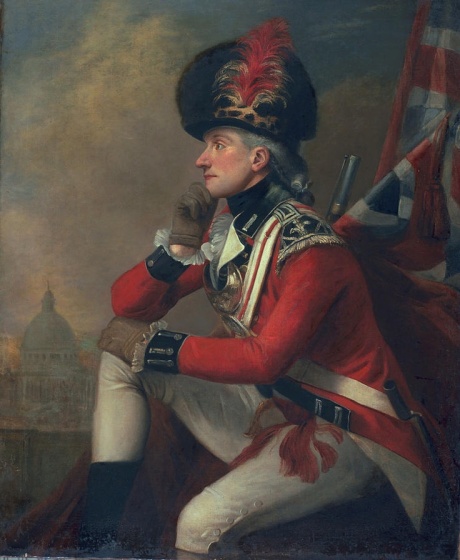 |
Banastre Tarleton 1st Baronet
|
Banastre Tarleton (1754-1833)
1st Baronet
Lover in 1782-1797
Lover in 1793-1797 (other source).
Lover in 1793-1797 (other source).
British soldier & politician
Son of: John Tarleton, a ship owner and slave trader & Jane Parker of Cuerdon, Lancashire.
Husband of: Susan Bertie, illegitimate daughter of 4th Duke of Ancaster, mar in 1798
"Tarleton's father was a Liverpool merchant with significant interests in the sugar and slave trades. In 1775 after gambling away most of his inheritance, Tarleton joined the army, volunteering for service in the American War of Independence. He gained a reputation for military skill, bravery and ruthlessness and returned to England in 1782 as a hero. He was painted by Reynolds and Gainsborough and became a society figure. For many years he lived with the actress Mary 'Perdita' Robinson, former mistress of his friend the prince of Wales. Tarleton remained in the army, reaching the rank of general in 1812. Tarleton also became involved in politics and was elected MP for Liverpool in 1790. Liverpool was the leading British slave trading port and the Tarleton family's shipping company was one of the top four slave trading firms. Perdita Robinson helped in his election campaign and later wrote his parliamentary speeches, many of which attacked and mocked the abolitionists." (The Business of Enslavement)
Personal & professional background.
" . . . It was about this time she entered into relations with Colonel---afterwards Sir Banastre---Tarleton, who was born in the same year as herself, and had served in the American army from 1776 until the surrender of Yorktown, on which he returned to England. For many years he sat in Parliament as the representative of Liverpool, his native town, and in 1817 he gained the grade of Lieutenant-General, and was created a baronet. His friendship with Mrs. Robinson lasted some sixteen years." (A Celebration of Women Writers)
Tarleton's physical appearance & personal qualities.
"For a fellow who had earned the nickname 'Bloody Ban', Banastre Tarleton was quite the ladies' man. although not a large man, his compelling physical presence belied his short stature. He was strong and athletic with reddish hair and dark eyes. It was his arrogant charm, however, that tantalized the ladies as much as (in not more than) his handsome features and his heroism." (Life Takes Lemons)
"For a fellow who had earned the nickname “Bloody Ban”, Banastre Tarleton was quite the ladies’ man. Although not a large man, his compelling physical presence belied his short stature. He was strong and athletic with reddish hair and dark eyes. It was his arrogant charm, however, that tantalized the ladies as much as (if not more than) his handsome features and his heroism." (Ban and Mary: A Lover’s Wager)
First encounter.
"When Mary Robinson and Banastre Tarleton coincided in Sir Joshua Reynolds' studio on January 28, 1782, it may not have been their first meeting. The previous Thursday night there had been a brilliant mid-winter masquerade at the King's Theater. The auditorium was festooned with parti-colored lamps and the upper tier of boxes was elaborately draped with garlands and bows. By half past midnight the place was crowded though only a few were in fancy dress. The 'beautiful Perdita' was one of them. Dressed in black domino, 'she did not unmask the whole evening; but there was just enough of her face seen, to make the rest wished for.' One of the few other people in fancy dress was Colonel Tarleton. He was also in domino, but wore no visor. At one point in the evening, he was addressed by an unknown domino and replied: 'Sir, let me see your face. I fight in the open day, and you attack me from a masked battery!' Mary does not appear to have been cross-dressed that night, so this was probably not her, but since she and Tarleton were the most famous recently returned travelers in the theater that night, it is highly likely that someone pointed them out to each other." (Perdita: The Literary, Theatrical, Scandalous Life of Mary Robinson: 176)
"Before long, Mary Robinson found consolation in the love of Lieutenant Colonel Banastre Tarleton, the dashing and ruthless cavalry commander of the 'British Legion' in the bloody southern campaigns of the American War of the Revolution. Tarleton handed over his sword when Cornwallis surrendered and returned to England on parole early in 1782. (In a footnote to the Memoirs the editor dates the 'attachment' which took place between Mrs. Robinson and colonel Tarleton shortly after the return of the latter from America . . . . [It] subsisted during sixteen years.' Tarleton married Priscilla, a natural daughter of the Duke of Ancaster, on 17 December 1798.)." (A Biographical Dictionary of Actors, Actresses, Musicians ..., Volume 13: 35)
George Ayscough (Capt.).
British dramatist & traveler:
"George Edward Ayscough, a captain in the Guards, was cousin to the second Lord Lyttelton. Some years later the date of his meeting with Mrs. Robinson he produced a version of Voltaire's 'Semiramis,' which he presented at Drury Lane Theatre in 1776. He is described as 'a parasite of Lord Lyttelton,' and as 'a fool of fashion.' . . . ." (Beaux & Belles of England: Mrs. Mary Robinson)
Captain O'Byrne.
Irish gamester
"George Edward Ayscough, a captain in the Guards, was cousin to the second Lord Lyttelton. Some years later the date of his meeting with Mrs. Robinson he produced a version of Voltaire's 'Semiramis,' which he presented at Drury Lane Theatre in 1776. He is described as 'a parasite of Lord Lyttelton,' and as 'a fool of fashion.' . . . ." (Beaux & Belles of England: Mrs. Mary Robinson)
Captain O'Byrne.
Irish gamester
Mr. Alderman Sayer.
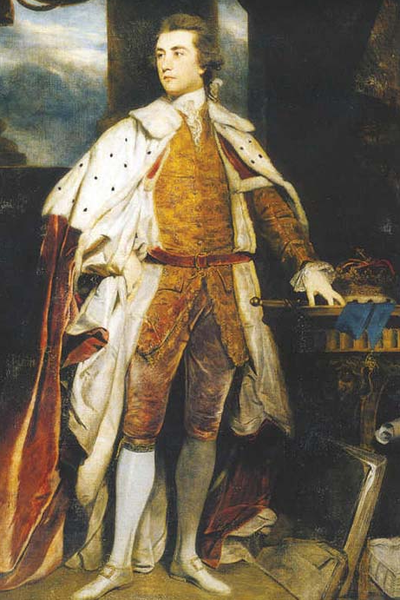 |
| John Frederick Sackville 3rd Duke of Dorset @Wikipedia |
7) John Frederick Sackville, 3rd Duke of Dorset (1745-1799)
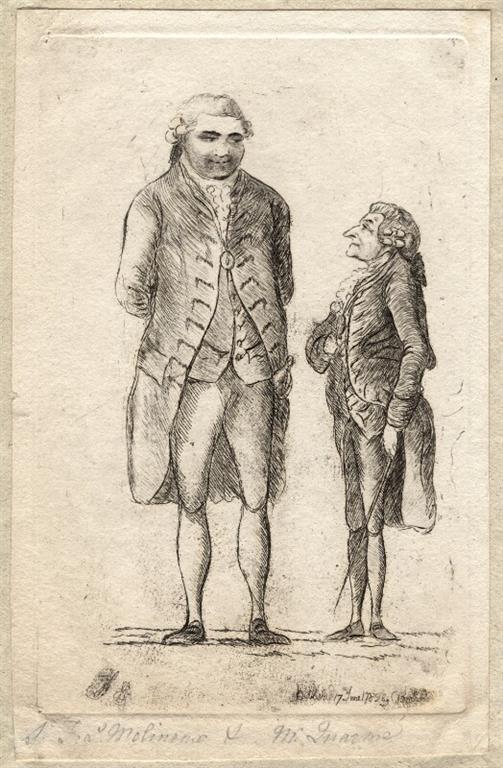 |
| Sir Francis Molyneux 7th Baronet |
8) Sir Francis Molyneux, 7th Baronet (1738-1812).
Commonly known as 'Fighting Fitzgerald,' from the number of duels in which he took part, was a man of good family, noted alike for his gallantry and recklessness. A fracas which was the result of his distasteful attentions to Mrs. Hartley, a well-known actress, had made him notorious in 1773, some years previous to his introduction to Mrs. Robinson. His life which was one of singular adventure, ended on the scaffold, he being executed for murder in 1786. (Beaux & Belles of England: Mrs. Mary Robinson)
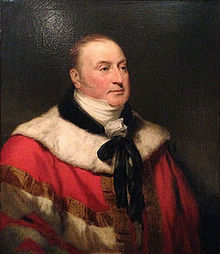 |
| George Capel-Coningsby 5th Earl of Essex |
11) George Capel-Coningsby, 5th Earl of Essex (1757-1839)
"Mary had tired of Lord Malden, who had probably only ever been a port in the storm of her abandonment by the Prince. He had been her loyal supporter in the financial negotiations with the Prince, but he did not have enough soul and spirit for her. . . . " (Davenport)
"It's not clear why the royal affair ended: the prince regent was no model of constancy, but it seems that Mar was romantically involved with the royal go-between, Lord Malden, possibly at the end of her liaison with his master, but more likely during and even before it. . . . " (Telegraph)
Benefits: " . . . As his hubris had made him a grand fool, Lord Malden relinquished his role as Mary's protector, though he did settle upon her an annuity and also a house in Berkeley Square. . . . " (Life Takes Lemons)
 |
| Sir John Lade |
14) Sir John Lade.
"Robinson was commended for her watchfulness by the Town and Country when approached by Sir John Lade, the 'Doating Lover', who had already swindled another actress into giving up her profession, luring her into the country and then taking her money. To Lade's promises of a 'settlement', Robinson was imagined replying with a wary smile: 'I hope you do not mean such a settlement as Miss B- - - [the abandoned actress] has just made upon her'.' Lade's persistence, however, coupled with a 'carte blanche' and 'a pair of valuable diamond earrings', finally won over the seduced 'Enchantress', having, at last, succeeded in 'flatter[ing] her vanity' and, most importantly, 'gratified her ambition'. The 'attentions and assiduities' paid by Sir John were 'the surest means of securing a woman's affection and fidelity', despite no shortage of competition in the 'very great' number of rivals vying for Robinson's notice. Simple offers of monetary reward or insubstantial hints about future gifts were unlikely to succeed with this ambitious actress. Fame, for Robinson, was inextricable from its glamorous and glittering accoutrements." (The Feminization of Fame 1750-1830: 89)
"Robinson was commended for her watchfulness by the Town and Country when approached by Sir John Lade, the 'Doating Lover', who had already swindled another actress into giving up her profession, luring her into the country and then taking her money. To Lade's promises of a 'settlement', Robinson was imagined replying with a wary smile: 'I hope you do not mean such a settlement as Miss B- - - [the abandoned actress] has just made upon her'.' Lade's persistence, however, coupled with a 'carte blanche' and 'a pair of valuable diamond earrings', finally won over the seduced 'Enchantress', having, at last, succeeded in 'flatter[ing] her vanity' and, most importantly, 'gratified her ambition'. The 'attentions and assiduities' paid by Sir John were 'the surest means of securing a woman's affection and fidelity', despite no shortage of competition in the 'very great' number of rivals vying for Robinson's notice. Simple offers of monetary reward or insubstantial hints about future gifts were unlikely to succeed with this ambitious actress. Fame, for Robinson, was inextricable from its glamorous and glittering accoutrements." (The Feminization of Fame 1750-1830: 89)
 |
| Robert Henley 2nd Earl of Northington @Wikipedia |
15) Robert Henley, 2nd Earl of Northington (1747-1786)
British aristocrat & politician
Son of Robert Henley, 1st Earl of Northington.
"Mary's sympathies could always be engaged; what she lacked was strong guidance in the ways of the world as her developing beauty became a magnet to men. She says that, being tall, she looked older than her years, and tells of a naval captain, a friend of her father's who drank tea with her and her mother one Sunday evening was so taken with her that he afterwards made a proposal of marriage. Hetty asked howl old he thought her daughter was; to his answer 'about sixteen', she replied with a smile 'not quite thirteen'. Nicholas too was aware of his daughter's attractions. He took Mary to call on the son of his old friend Lord Northington, who had died in January 1772; Robert Henley, the second Earl, became an astute politician, but like his friend Charles James Fox had the reputation of a rake. Mary says she received from him the ' most marked attention and politeness', but Darby no doubt noticed appraising glances. When he disappeared from England again, he left with a chilling threat to his wife" 'Take care that no dishonour falls upon my daughter. If she is not safe at my return I will annihilate you.' . . . ." (Prince's Mistress, Perdita: A Life of Mary Robinson)
16) Louis-Philippe I, Duc d'Orleans
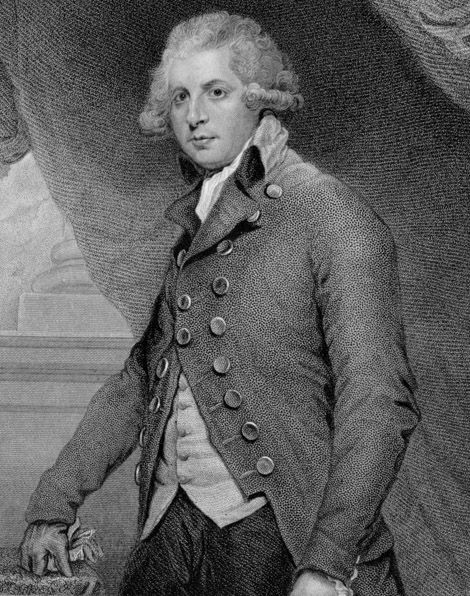 |
| Richard Brinsley Sheridan |
 |
| Robert Spencer @Wikipedia |
18) Robert Spencer (Lord) 1747-1831)
British aristocrat & politician.
Son of Charles Spencer, 3rd Duke of Marlborough & Elizabeth, daughter of Thomas Trevor, 2nd Baron Trevor.
Husband of Henrietta Bouverie, mar 1811.
 |
| Thomas, 2nd Baron Lyttelton Wikipedia |
20) Thomas Lyttelton, 2nd Baron Lyttelton (1744-1779)
Son of George Lyttelton, 1st Baron Lyttelton & Lucy Fortescue.
The most accomplished libertine.
"Lord Lyttelton, who was perhaps the most accomplished libertine that any age or country has produced, with considerable artifice inquired after Mr. Robinson, professed his earnest desire to cultivate his acquaintance, and, on the following day, sent him a card of invitation. Lyttelton was an adept in the artifices of fashionable intrigue: he plainly perceived that both Mr. Robinson and myself were uninitiated in its mysteries: he knew that to undermine a wife's honour, he must become aster of the husband's confidence; and Mr. Robinson was too much pleased with the society of a man whose wit was only equaled by his profligacy, to shrink from such an association." (Memoirs of Mary Robinson: "Perdita")
"Thomas, second Baron Lyttelton, known as 'the wicked Lord Lyttelton,' in distinction to his father, who in his lifetime had been styled 'the good Lord Lyttelton.' Thomas, Baron Lyttelton, was a man of parts and fashion, a politician, a writer of verses, an artist whose paintings were supposed to contain the combined excellencies of Salvator Rosa and Claude, and withal one of the greatest profligates of the age. This is the Lord Lyttelton who, in his thirty-fifth year, and whilst in perfect health, dreamt a woman appeared to him and announced he had not three days to live. He spoke lightly in his dream, and on the morning of the third day felt in such good spirits that he declared he should 'bilk the ghost.' He died suddenly that night, when his friend Miles Peter Andrews dreamt Lyttelton appeared to him and said, 'All is over.'." (Beaux & Belles of England: Mrs. Mary Robinson)
"On the couple's return to London, Robinson began to gamble and to drink heavily, matching the excesses of his new associates, a crowd of high livers led by Mary's godfather Lord Northington. Mary was now persecuted by the sly solicitations of Thomas, second Baron Lyttelton, who, she says, was perhaps the most accomplished libertine that any age or country has produced.' Lyttelton tried to advance his own bad cause by reporting a liaison which his friend, Mary's husband, was enjoying with one Harriet Wilmot. Mary began also to be pursued by the rake George Robert Fitzgerald." (A Biographical Dictionary of Actors, Actresses, Musicians, Vol 13: 31)
21) Mr. William Brereton.


